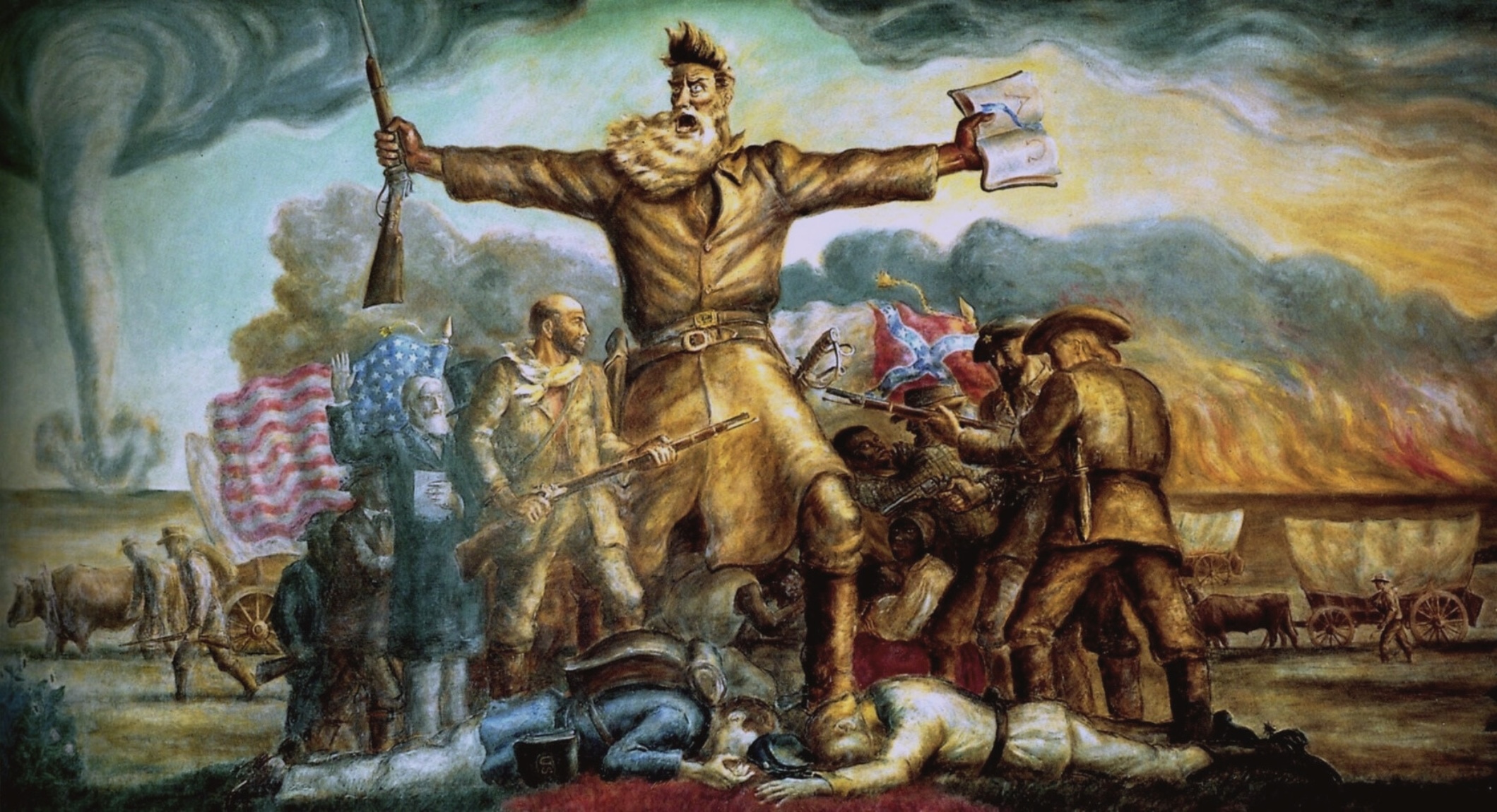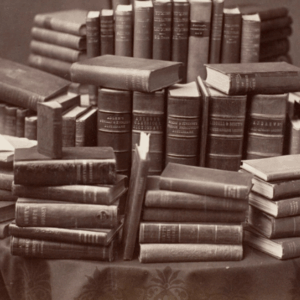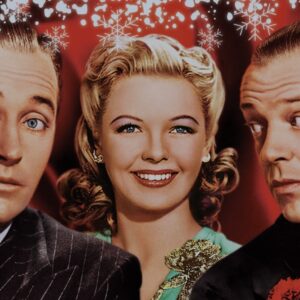
Why Donald Trump Wants to Erase John Brown’s Fiery Abolitionist Legacy (and Why He Will Fail)
Robert S. Levine Visits Harpers Ferry Amid a Government Shutdown
In the early days of September, at a more gentle time before the government shutdown, President Trump ordered the removal of “corrosive ideology” from all national parks, by which he meant all signage and displays that refer to racism, slavery, gay rights, the persecution of Indigenous people, or basically anything suggesting that Americans don’t have a rosy, conflict-free history. Among the parks he targeted was Harpers Ferry National Historical Park, the site of John Brown’s October 1859 attack on a federal arsenal. Brown’s group of twenty-two men, including five Black people, sought to inspire a massive slave rebellion in the region. The raid led to at least sixteen deaths, including ten of Brown’s compatriots, and was quashed by U.S. Army Lieutenant Colonel Robert E. Lee.
On December 2nd of that year, the Commonwealth of Virginia hanged Brown for treason, murder, and conspiring with enslaved people. He was subsequently hailed by many northern abolitionists as a martyr and damned by many southerners as an insurrectionist intent on destroying the institution of slavery. Can Harpers Ferry National Historical Park, when it eventually reopens, somehow continue to exist without any mentions of slavery?
The town of Harpers Ferry has a fascinating history. Established by the mill and ferry entrepreneur Robert Harper in 1747, Harpers Ferry assumed national importance in 1796 when President George Washington ordered the purchase of land there, in the slave state of Virginia, for a gun factory. That led to the establishment of a federal armory that by the time of the John Brown raid had produced over a half million guns for the government. Because of its position on vital waterways, Union and Confederate troops fought several key battles at Harpers Ferry, leaving the town virtually destroyed.
But Brown’s raid inspired the 1868 founding in Harpers Ferry of the historically Black Storer College, which came to play an important role in Blacks’ quest for equality during the Reconstruction years and beyond. Recognizing the town’s historic importance, Congress passed a bill, signed into law by President Franklin D. Roosevelt in 1944, creating the Harpers Ferry National Monument. Work began on the site well after the war, during the late 1950s, and Harpers Ferry National Historical Park, with its visitor center, John Brown Museum, numerous other buildings, and gorgeous natural setting officially opened on May 20, 1963. It has been thriving ever since.
Harpers Ferry National Park serves as the economic engine of the area, which is why the Republican governor of West Virginia, Patrick Morrisey, recently asked Trump for permission to keep the park open on state funds. The most recent National Park Service report shows that over 400,000 people visited the park in 2023, bringing approximately $38 million to the local economy. Would the congressional and state leaders of the predominantly Republican 2nd Congressional district want to sacrifice these tourist dollars? For it is the park’s history, not just the striking views at the confluence of the Shenandoah and Potomac Rivers, that brings the masses to the park.
I have been visiting Harpers Ferry National Park since the 1990s, and I decided to visit the park anew on a sunny Saturday in September, not knowing that this might be my last opportunity for a while. What, I wondered, have Trump’s edicts wrought?
Well, I am happy to report (but also a bit fearful, given the possible repercussions): not all that much. The park was packed with hundreds if not thousands of visitors: white, brown, and Black. The park service brochure, available at the information desk, unabashedly informs visitors: “Here, abolitionist John Brown struck a blow against slavery.” Brown may have been a militant, but the brochure asserts that his “raid made Harpers Ferry a symbol of freedom.”
The perspective in this brochure is actually not all that different from the National Park’s anonymously-authored first booklet on Harpers Ferry, published in 1957 when work on the site got underway. The authors term Brown “ardent to the point of fanaticism,” but they can’t help celebrating him for his convictions. “In an eloquent statement,” they write, Brown shortly before being hanged “denied everything ‘but… a design on my part to free slaves.’” The booklet includes Brown’s notable final reflection that to “interfere” on behalf of God’s “despised poor” was “no wrong, but right.” Brown, in this account, was a freedom-fighter who modeled himself on Christ.
Just about all that I saw during my recent visit suggests that Harpers Ferry National Park remains committed to telling the story of freedom that has long informed the National Park Service’s writings about the site. The bookstore continues to have a section called African American History, featuring such books as Henry Louis Gates’s collection of nineteenth-century slave narratives. The African American History building was closed for unclear reasons (that seemed to me ominous), but the John Brown Museum right across the street had compelling displays about Brown’s attack and its aftermath. Slavery was everywhere in sight, including in a mural called “Slavery’s Storm” and in a blown-up image of the famous Josiah Wedgwood 1787 antislavery medallion of an enslaved person asking, “Am I not a man and a brother?” A provocative display drew connections between Brown’s attack and the Civil Rights Movement. Another display, called “Reactions,” charted mostly positive responses to Brown and included a picture of Harriet Beecher Stowe, along with an excerpt from her 1860 letter to a British clergyman declaring that Brown “has done more than any man yet for the honor of the American name.”
At a time when many are honoring a Christian nationalist who objected to the Civil Rights movement and Civil Rights laws, it is more vital than ever that we find inspiration in John Brown and Harriet Beecher Stowe.
John Brown and Harriet Beecher Stowe: an apparently strange pairing of a militant with the author of the sentimental antislavery novel Uncle Tom’s Cabin, published seven years before Brown’s raid. Stowe’s ability to make white northerners care about the sufferings of the enslaved people led Abraham Lincoln and others to regard her as a key instigator of the Civil War. But Stowe was a more complicated figure than the sentimentalist label would belie, and her embrace of Brown’s actions has much to teach us about Christian nationalism and Stowe herself.
Writing from Florence on January 1, 1860, one month after Brown’s execution, Stowe, in a piece published in the New York Independent, hailed Brown as a revolutionary. While her younger brother Henry Ward Beecher, the renowned minister of Brooklyn’s Plymouth Church, condemned Brown for “his mad and feeble schemes,” the Protestant evangelical Stowe called him a Christian hero. This was a man, she wrote, who got the “demons of slavery . . . trembling and quailing before some advancing power,” and a man who, while imprisoned in Virginia, was guarded by soldiers who could not “subdue the tremor caused by his great quiet spirit.” The now martyred Brown, she said, “calmly gave his life up to a noble effort for human freedom.” She concluded with this thought: “The cross is the way to the throne.”
Here and in many of her writings Stowe imagined Christ as a mediator capable of elevating all Christians to heaven. In John Brown’s case, as with the iconic figure of Uncle Tom, self-sacrifice was the way to God’s throne.
Stowe persisted in her admiration for Brown. In an 1868 book titled Men of Our Times: or Leading Patriots of the Day, Stowe celebrated abolitionist William Lloyd Garrison, Senator Charles Sumner, and President Lincoln, among many others, including Brown, whom she installed in her pantheon of American freedom fighters. Brown, she wrote, “was our first great commander, who fought single-handed for his country, when traitors held Washington and used the United States army only as a means to crush and persecute her free citizens and help on the slavery conspiracy.”
Stowe is known mainly for Uncle Tom’s Cabin, a novel profoundly informed by her Christian nationalist belief that the United States was failing in its mission to become a New Canaan, precisely because of the blasphemous practice of slavery. Her religious sensibility informs all aspects of the novel, including the characterization of Black people, whom she sometimes portrays with the help of stereotypes but always as humans equal to whites. She is outraged that enslaved Black people are regarded as property and subjected to such inhumane horrors as the separation of families (children and parents being sold to different enslavers) and floggings on plantations, where they are held in sub-human conditions. She shows how the federal government enforces such horrors through legislation and the use of marshals to capture fugitive slaves. This is a novel that we need to read right now.
Stowe published a second antislavery novel, Dred (1856), that presented Black militants fighting against slavery in North Carolina. Her third novel, The Minister’s Wooing, published in 1859, depicted slavery in eighteenth-century New England. All Americans, she suggested, were implicated in the practice of slavery. At the outset of the Civil War, she boldly attacked Abraham Lincoln for moving slowly on emancipation, calling on the president to follow the teachings of Jesus, “a living God,” and “free every slave in this land.” After the Civil War, she published pieces in the Atlantic Monthly about the need for Reconstruction policies that would give Black people the full rights of citizenship. She saw Godliness in people of all colors, and she sought to put her words into action. In 1867 she moved to the Jacksonville area of Florida and attempted to set up a school for white and Black children, which was burned to the ground by local whites. Along with her husband, she led religious meetings on Sundays for the Black families in the area.
At a time when many are honoring a Christian nationalist who objected to the Civil Rights movement and Civil Rights laws, it is more vital than ever that we find inspiration in John Brown and Harriet Beecher Stowe. My well-timed visit to Harpers Ferry helped to confirm their importance, and I could sense their presence in the harmonious gathering of a diverse group of U.S. citizens on a beautiful day in September.
Robert S. Levine
Robert S. Levine is a Distinguished University Professor at the University of Maryland, College Park. His new book, After Uncle Tom’s Cabin: Harriet Beecher Stowe and the Quest for Interracial Democracy is forthcoming with W. W. Norton.












